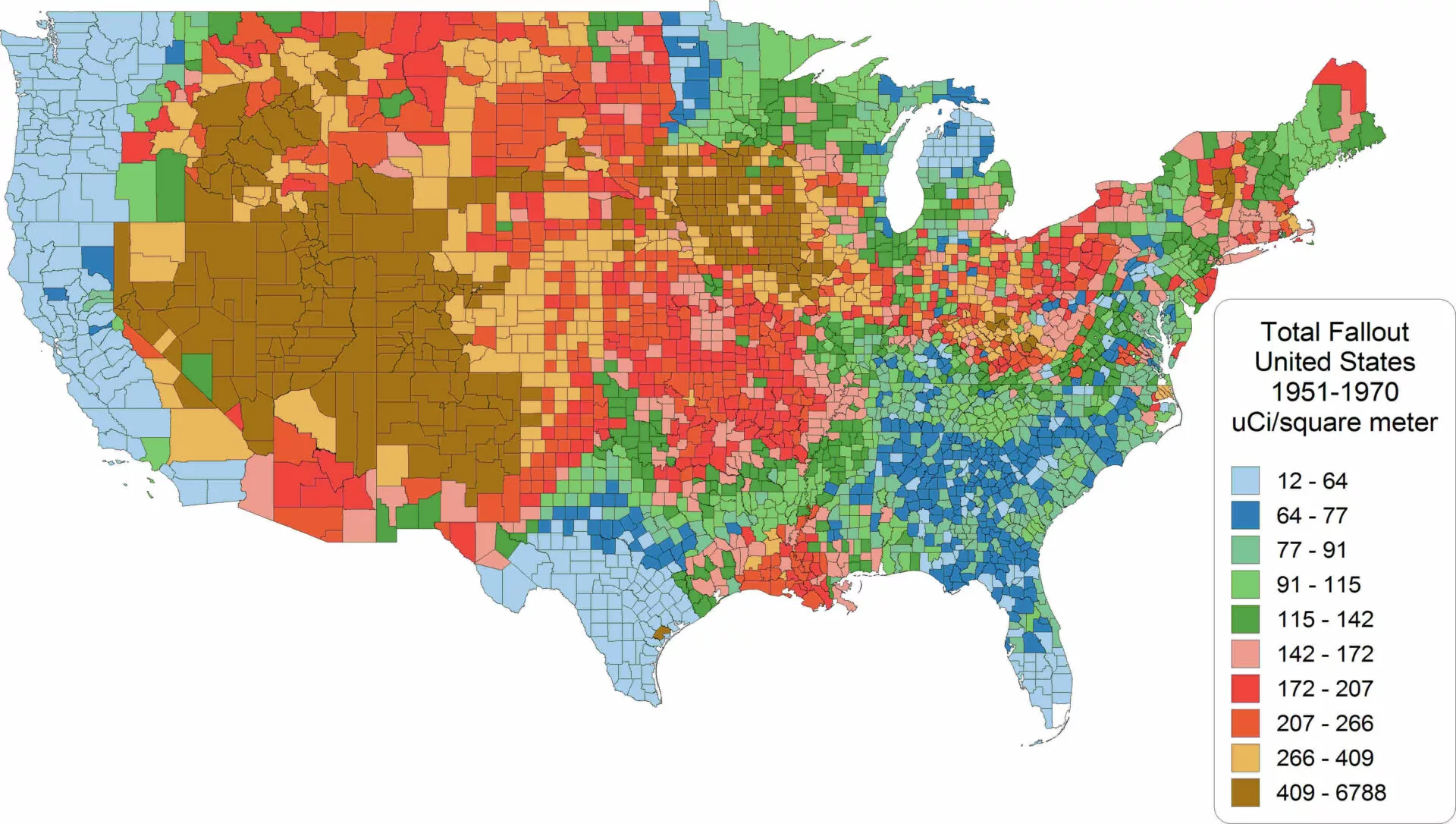QUOTE OF THE WEEK
Nothing Found
It seems we can’t find what you’re looking for. Perhaps searching can help.
LANL’s Central Mission: Los Alamos Lab officials have recently claimed that LANL has moved away from primarily nuclear weapons to “national security”, but what truly remains as the Labs central mission? Here’s the answer from one of its own documents:
LANL’s “Central Mission”- Presented at: RPI Nuclear Data 2011 Symposium for Criticality Safety and Reactor Applications (PDF) 4/27/11
Banner displaying “Nuclear Weapons Are Now Illegal” at the entrance in front of the Los Alamos National Lab to celebrate the Entry Into Force of the Nuclear Weapon Ban Treaty on January 22, 2021
Nothing Found
It seems we can’t find what you’re looking for. Perhaps searching can help.
Follow the Money!
Map of “Nuclear New Mexico”
In 1985, US President Ronald Reagan and Russian President Mikhail Gorbachev declared that “a nuclear war cannot be won and must never be fought.”

Waste Lands: America’s Forgotten Nuclear Legacy
The Wall St. Journal has compiled a searchable database of contaminated sites across the US. (view)
Related WSJ report: https://www.wsj.com
NEW & UPDATED
The US Military Almost Deployed Nuclear Missile Trains on American Railroads During the Cold War
In particular, 1983 served as a dangerous flashpoint, with the distrust and paranoia between the East and West amped up after the Soviets shot down Korean Air Lines Flight 007 and nearly misinterpreted a NATO exercise simulating a nuclear attack for the real thing…“In 1983, the two nuclear superpowers were like blindfolded boxers careening toward a death match.”
By Stephen Ruiz | February 20, 2024 military.com
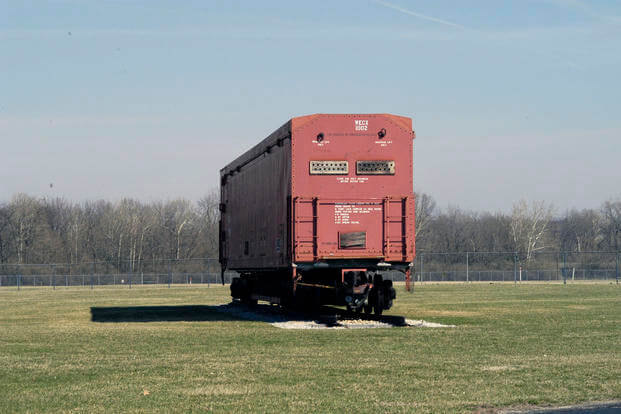
The Cuban Missile Crisis was two decades in the rearview, but in the early 1980s, Cold War tensions between the United States and Soviet Union remained feverishly high.
In particular, 1983 served as a dangerous flashpoint, with the distrust and paranoia between the East and West amped up after the Soviets shot down Korean Air Lines Flight 007 and nearly misinterpreted a NATO exercise simulating a nuclear attack for the real thing. That year also saw the Air Force successfully flight-test the Peacekeeper intercontinental ballistic missile for the first time as the Defense Department sought to develop a mobile ICBM system. U.S. military leaders were playing a game of catch-up, though, because the Soviets already had deployed one. As a 2022 Air & Space Forces Magazine article put it: “In 1983, the two nuclear superpowers were like blindfolded boxers careening toward a death match.”
The Air Force’s Strategic Air Command, which largely oversaw the bombing capability of America’s nuclear weapons from 1946 until 1992, had been trying to implement a mobile ICBM system since 1971, but struggled to reach a consensus on what that would look like. Finally, President Ronald Reagan, who had labeled the Soviet Union “the Evil Empire” during a March 1983 speech, issued a national security directive on Dec. 19, 1986, to develop the Peacekeeper Rail Garrison program.
DNFSB Recommendation February 8, 2024 – Excerpts Pertaining to LANL
Published 2/8/24 in the Federal Register at https://www.govinfo.gov/content/pkg/FR-2024-02-08/pdf/2024-02513.pdf
Pre-published at: https://public-inspection.federalregister.gov/2024-02513.pdf
Page numbers below are from that. All excerpts are verbatim.
DNFSB Recommendation 2003-01
Onsite Transportation Safety
[TSD = “Transportation Safety Document”
MAR = “Materials at Risk”, typically plutonium]
Page 2: however, more work is necessary to ensure the LANL TSD appropriately identifies all hazards, analyzes all pertinent accident scenarios, and evaluates the effectiveness of all credited safety controls.
3: the risk remains that LANL or other defense nuclear sites may regress to inadequate TSDs that fail to provide an effective set of safety controls
4: These safety issues are particularly concerning given the high material-at-risk (MAR) allowed by the TSD, the proximity of LANL’s onsite transportation routes to the public, and the nature of several credible accident scenarios. These factors result in high calculated unmitigated dose consequences to the public without an adequate safety control strategy.
State Sues Holtec for Mishandling Asbestos at Pilgrim Reactor Site
Attorney general says demolition put workers and residents at risk
BY CHRISTINE LEGERE, THE PROVINCETOWN INDEPENDENT | February 15, 2024 provincetownindependent.org
BOSTON — Mass. Attorney General Andrea Campbell has filed a civil complaint against Holtec Decommissioning International, owner of the shuttered Pilgrim Nuclear Power Station in Plymouth, for a long list of violations related to improperly handling, storing, shipping, and disposal of asbestos-laced debris during the plant’s demolition.
The complaint cites work done between January 2021 and September 2023. The improper handling put the health of workers and residents near the plant in jeopardy, according to the complaint, which seeks penalties of $25,000 per day for each violation.
The attorney general’s office filed the 28-page suit on Feb. 14 in Suffolk Superior Court. Assistant Attorney General John Craig, from the office’s environmental division, states that Holtec didn’t hire the required asbestos inspector before demolishing a 32-foot-high water tower in 2021. Asbestos-laced paint on the exterior of the tower was not removed and properly disposed of, the complaint charges, and it wound up in flakes on the work site and mixed in with metal scraps from the tower.
Public given more time to comment on LANL’s steps against toxic plume
“Scott Kovac, Nuclear Watch New Mexico’s operations director, said the proposed actions seem broad, lacking important details on what actually would be done. Also, it would make more sense to have the Environment Department sign off on a plan of action — because the agency has final say — before going through the NEPA process.”They’re doing it backward,” Kovac said.”
By Scott Wyland swyland@sfnewmexican.com, Santa Fe New Mexican | February 12, 2024 santafenewmexican.com
The public will have an additional month to weigh in on a federal report assessing the possible impacts of the latest proposed measures for cleaning up a toxic chromium plume beneath Los Alamos National Laboratory.
The U.S. Energy Department issued the 115-page environmental assessment in November, then offered a 60-day period for public comment that was set to end Monday but now will go to March 13.
Nuclear Weapons Issues & The Accelerating Arms Race: February 2024
FEDERAL BUDGET NEWS
Release of federal FY 2025 budget expected March 11 (it will initially be just topline numbers).
Meanwhile on the FY 2024 budget: House and Senate Armed Services Committee authorized funding exceeding Biden’s request, including money for the Sea-Launched Cruise Missile and nuclear warhead (reminder: that the President doesn’t want), plus adding $$ for plutonium pit production at the Savannah River Site. But appropriations bills are still not happening because of ever increasing congressional dysfunction. This is now best exemplified by Republicans rejecting an immigration bill they initially drafted but that Trump denounced because he wanted immigration to remain a hot issue during the presidential election campaign.
The current second “laddered” Continuing Resolution that is keeping the government running expires March 1 and 8.
Building a World Without Nuclear Weapons
Building a World Without Nuclear Weapons: Online Forum January 27, 2024
Online forum held January 27, 2024 with musicians What the World Needs Now Interfaith Coalition Singers, host Peter Metz, Bishop John Stowe (Lexington KY), moderator Claire Schaeffer Duffy, and panelists Archbishop John Wester (Santa Fe NM), Dr. Ira Helfand, and Marie Dennis. With a special message from Rep. Jim McGovern (MA).
The fallout never ended
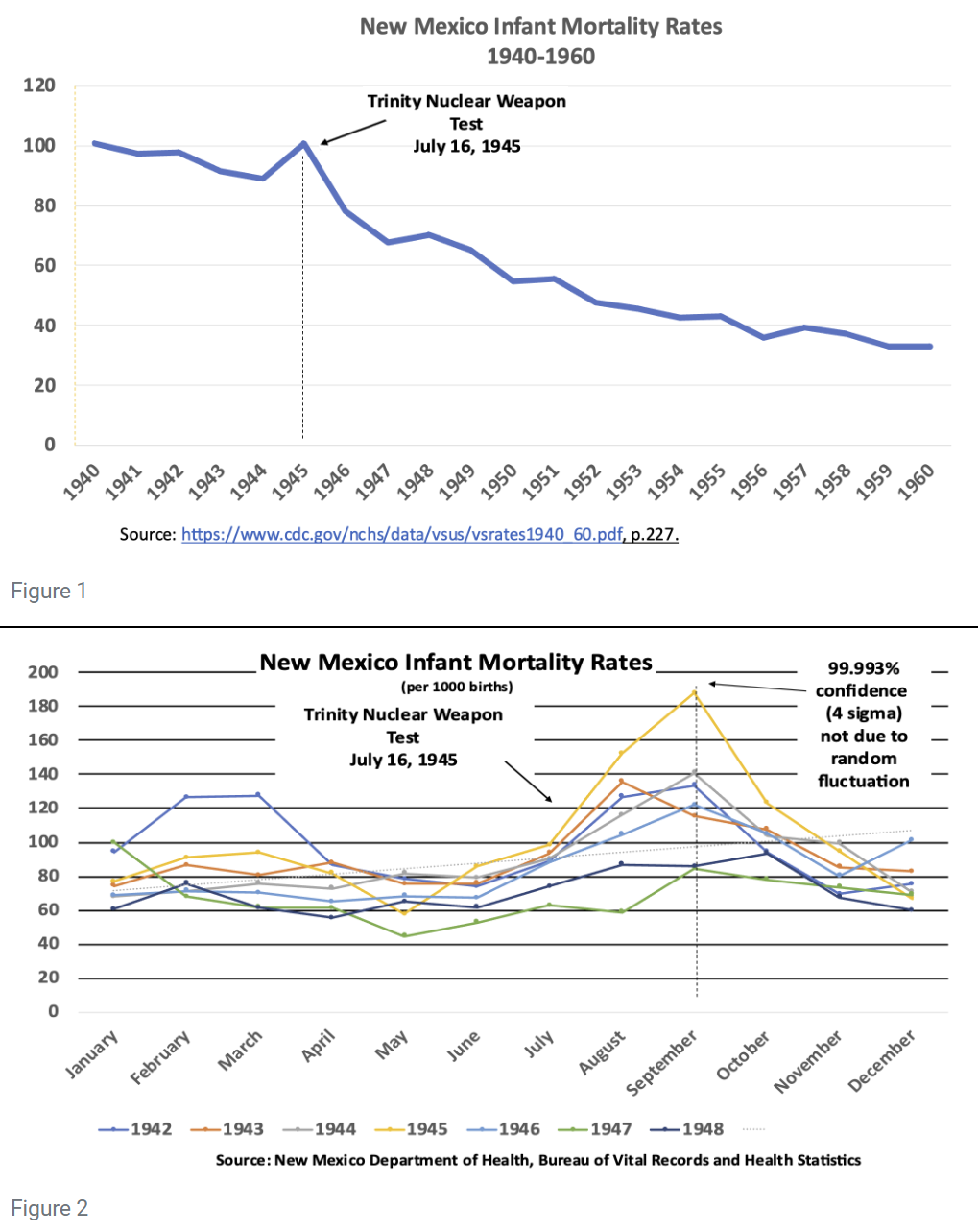 Decades of nuclear weapons tests and other radioactive experiments injured or killed scientists, soldiers, and innocent bystanders. Many of them, and their relatives, have never been compensated, but new efforts may change that. A former Senate staffer and expert on the US nuclear program looks back at its harmful effects, and how the government addressed them—or didn’t.
Decades of nuclear weapons tests and other radioactive experiments injured or killed scientists, soldiers, and innocent bystanders. Many of them, and their relatives, have never been compensated, but new efforts may change that. A former Senate staffer and expert on the US nuclear program looks back at its harmful effects, and how the government addressed them—or didn’t.
By Robert Alvarez , THE BULLETIN | February 1, 2024 thebulletin.org
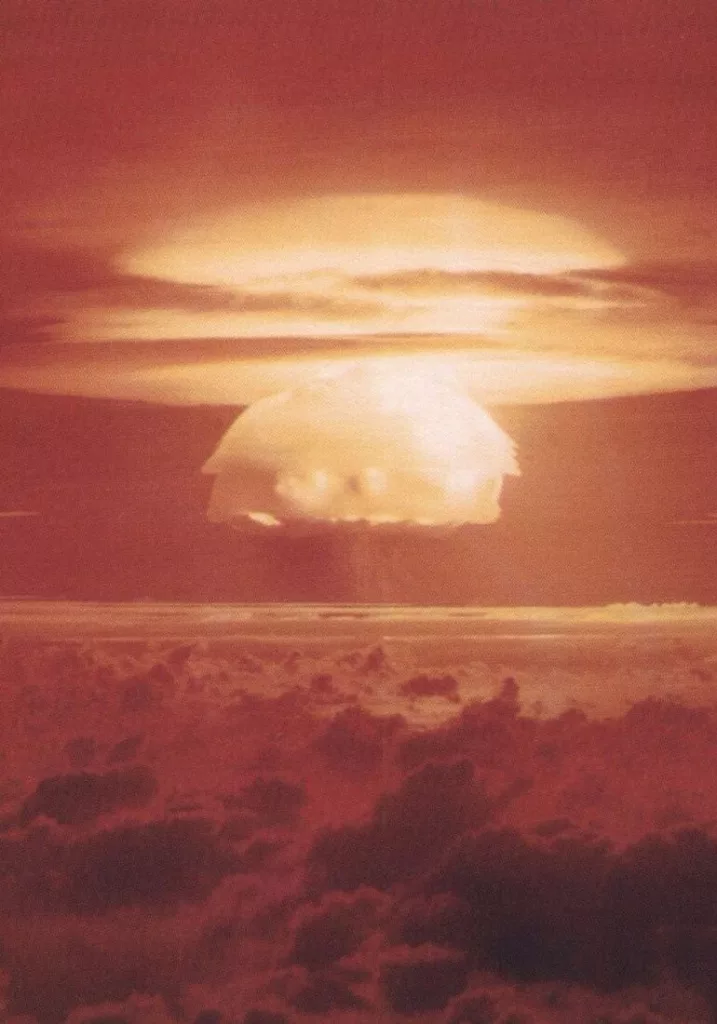
- ☢ Seeking justice for radiation victims of the US nuclear program
- ☢ Human radiation experiments and Oppenheimer’s “vaudeville”
- ☢ The radiation effects of Trinity
- ☢ Lewis Strauss, Castle Bravo, and the end of above-ground nuclear testing
- ☢ Running shoes on the Senate floor: How US preparations to test nuclear weapons ended
THE FALLOUT NEVER ENDED:
Attorney general seeks to deny Holtec $260M state tax break
In appeal to state Supreme Court, AG lists major concerns about Camden nuclear tech firm
BY JEFF PILLETS, NJ SPOTLIGHT NEWS | February 2, 2024 njspotlightnews.org
New Jersey Attorney General Matthew J. Platkin is appealing to the state Supreme Court to ban Holtec International, a Camden nuclear technology firm dogged by a history of ethical issues, from collecting a $260 million tax break awarded in 2014.
Platkin, in a petition to the court filed Thursday, wrote that Holtec must not be allowed to get away with lying on its application for the largest tax break in state history. Rewarding Holtec’s “material” misrepresentations, Platkin argued, would undermine state contract law and encourage other applicants to deceive the state.
“The question is whether a business that concealed prior misconduct when seeking millions in incentives can nevertheless walk away scot-free,’’ wrote Platkin, who is contending that the appellate court which decided in favor of Holtec made critical legal errors.
New York Times: Tax Break Scandal Leads to $5 Million Fine for N.J. Energy Company
A business tied to George Norcross III, a high-profile New Jersey Democrat, has agreed to pay a $5 million penalty after a criminal investigation into hundreds of millions of dollars in tax breaks that the energy company, Holtec International, was awarded.
By Tracey Tully, The New York Times | January 30, 2024 nytimes.com
The fine, announced early Tuesday by the state attorney general’s office, enables officials from Holtec, a company based in Camden, N.J., that dismantles nuclear power sites, to avoid criminal prosecution linked to a 2018 application for $1 million in tax credits.
Mr. Norcross, an insurance executive who sits on the board of Holtec, has for decades held an outsize grip on New Jersey politics and has used his clout in the national Democratic Party and in Camden County, as well as his fund-raising ability, to influence state legislation. Mr. Norcross has never held elected office, and his power has waned over the last several years after a series of embarrassing legislative losses in South Jersey.
Still, he has remained one of the state’s most feared unelected politicians.
“We are sending a clear message: No matter how big and powerful you are, if you lie to the state for financial gain, we will hold you accountable — period,” Matthew J. Platkin, New Jersey’s attorney general, said in a statement.
Holtec, in a statement, denied “any misconduct.”
Controversial Camden-based nuclear parts maker to pay $5M fine
New Mexico Archbishop Wester calls Catholics to work for nuclear abolition
“So, too, must we be prophets warning of the nuclear dangers,” Wester told participants. “So, too, must we be humble and faithful to God while bringing down the Goliath of nuclear weapons. We know that it’s not God’s purpose to end humanity in radioactive ashes. Instead, he wants to elevate the human race to light and salvation. But God’s purpose is worked through his instruments. So, let us get to work.” – Archbishop John Wester of Santa Fe, New Mexico
BY DENNIS SADOWSKI, The National Catholic Reporter | ncronline.org
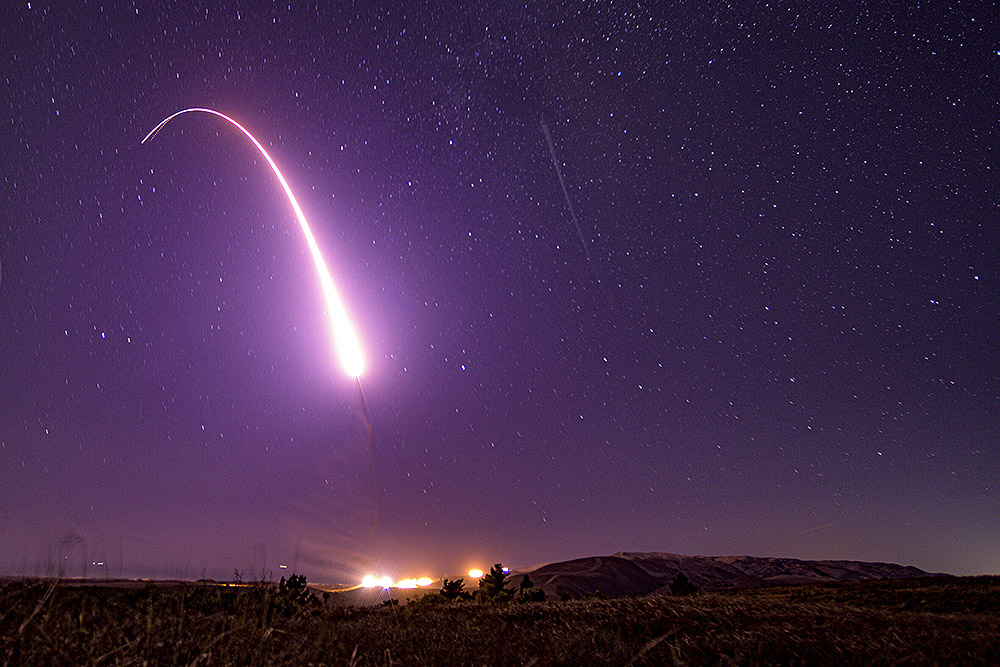
In the estimation of longtime peace advocate Marie Dennis, a gradual shift is taking place in communities, churches and schools around the world to embrace nonviolence in solving conflict.
From religious leaders in the Democratic Republic of Congo to neighborhoods in her hometown of Washington, D.C., people are coming together to seek new and creative paths to build peaceful communities, she said.
They may be small steps, but the glimmers in everyday life give her hope that conflict and even wars, including nuclear war, eventually can be overcome, Dennis told National Catholic Reporter following a Jan. 27 webinar hosted by Pax Christi USA and the Pax Christi Massachusetts chapter.
The webinar marked the third anniversary of the Treaty on the Prohibition of Nuclear Weapons coming into force on Jan. 22, 2021.
The 2024 Doomsday Clock announcement from the Bulletin of Atomic Scientists
A moment of historic danger: It is still 90 seconds to midnight
Ominous trends continue to point the world toward global catastrophe. The war in Ukraine and the widespread and growing reliance on nuclear weapons increase the risk of nuclear escalation. China, Russia, and the United States are all spending huge sums to expand or modernize their nuclear arsenals, adding to the ever-present danger of nuclear war through mistake or miscalculation.
In 2023, Earth experienced its hottest year on record, and massive floods, wildfires, and other climate-related disasters affected millions of people around the world. Meanwhile, rapid and worrisome developments in the life sciences and other disruptive technologies accelerated, while governments made only feeble efforts to control them.
The members of the Science and Security Board have been deeply worried about the deteriorating state of the world. That is why we set the Doomsday Clock at two minutes to midnight in 2019 and at 100 seconds to midnight in 2022. Last year, we expressed our heightened concern by moving the Clock to 90 seconds to midnight—the closest to global catastrophe it has ever been—in large part because of Russian threats to use nuclear weapons in the war in Ukraine.
Today, we once again set the Doomsday Clock at 90 seconds to midnight because humanity continues to face an unprecedented level of danger. Our decision should not be taken as a sign that the international security situation has eased. Instead, leaders and citizens around the world should take this statement as a stark warning and respond urgently, as if today were the most dangerous moment in modern history. Because it may well be.
But the world can be made safer. The Clock can move away from midnight. As we wrote last year, “In this time of unprecedented global danger, concerted action is required, and every second counts.” That is just as true today.
Continue reading the full 2024 Doomsday Clock statement.
Watch the 2024 Doomsday Clock announcement above.
Nuclear deterrence is the existential threat, not the nuclear ban treaty
In the words of Melissa Parke, the executive director of the International Campaign to Abolish Nuclear Weapons (ICAN), “Nuclear deterrence may well work until the day it doesn’t.” What happens when nuclear deterrence fails? The problem is that it is impossible to create a plan for that day.
By Ivana Nikolić Hughes, Xanthe Hall, Ira Helfand, Mays Smithwick, THE BULLETIN | January 22, 2024 thebulletin.org
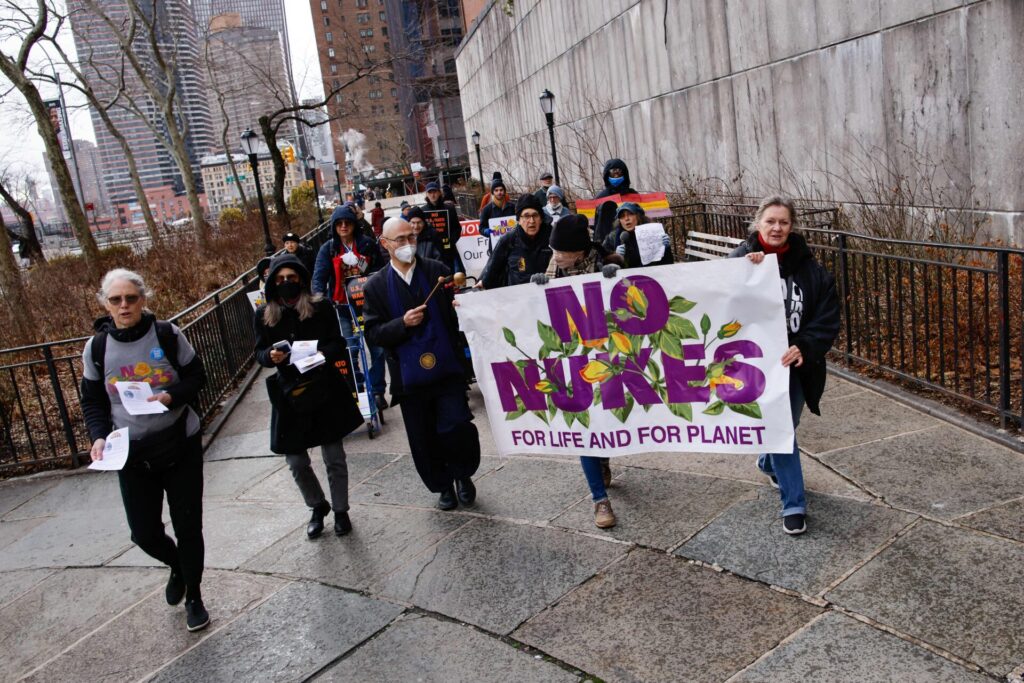
In a deeply misguided article in this publication, Zachary Kallenborn contends that the Treaty on the Prohibition of Nuclear Weapons (TPNW) is a threat to humanity. To build this narrative, Kallenborn does not simply present nuclear deterrence as a stable and useful framework for avoiding conventional wars. Rather, he goes beyond the common deterrence arguments to assert that nuclear weapons restrain world wars, which allows nations to work together on addressing existential threats. Nothing could be further from the truth.
Nuclear deterrence is a myth. Nuclear deterrence involves a nation state maintaining a believable threat of retaliation to deter an adversary’s attack. This relies on demonstrations of the readiness and the capacity to use nuclear weapons—a highly dangerous form of bluff which, in turn, makes those targeted increase their hardware and rhetoric. We are currently witnessing this kind of escalation among several nuclear weapon possessor states, which could result in nuclear war.
Nuclear deterrence rests on decision makers always behaving rationally; even if different states and parties weigh values, threats, and possible consequences in the same way, individual leaders do not always behave rationally.
ACTION ALERTS
Nothing Found
It seems we can’t find what you’re looking for. Perhaps searching can help.
CRITICAL EVENTS
Nothing Found
It seems we can’t find what you’re looking for. Perhaps searching can help.
Nothing Found
It seems we can’t find what you’re looking for. Perhaps searching can help.
New Nuclear Media: Art, Films, Books & More
Nothing Found
It seems we can’t find what you’re looking for. Perhaps searching can help.
Nothing Found
It seems we can’t find what you’re looking for. Perhaps searching can help.














